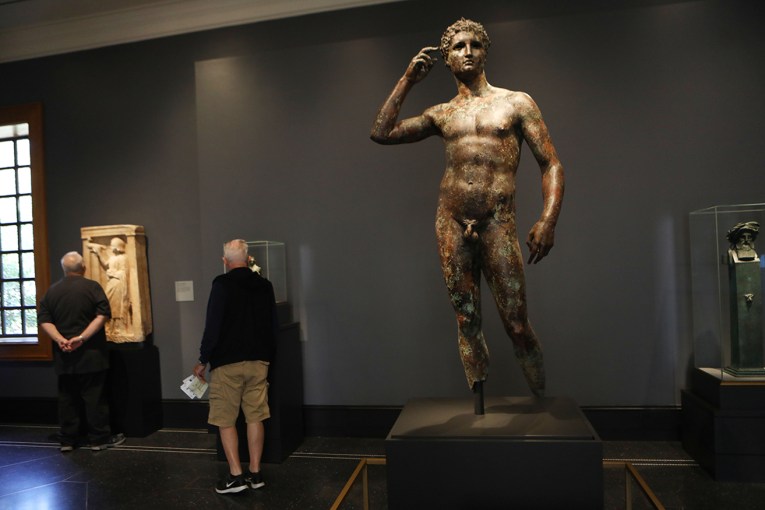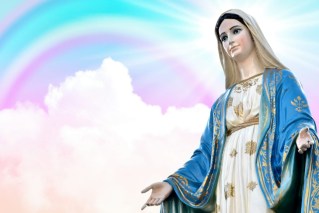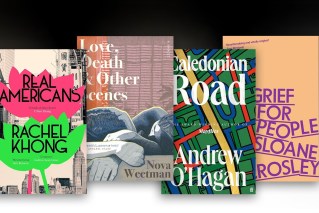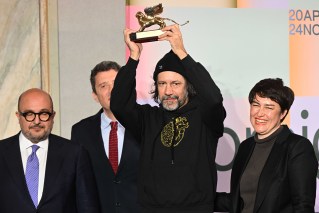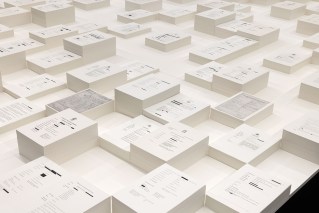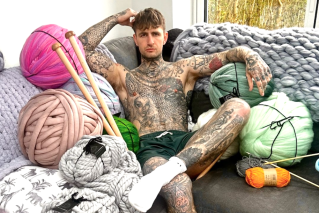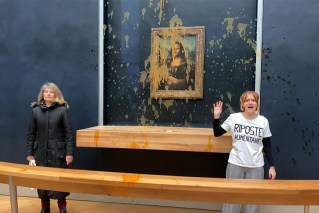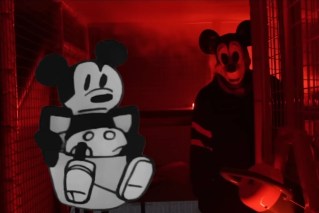The bush towns that make art out of adversity
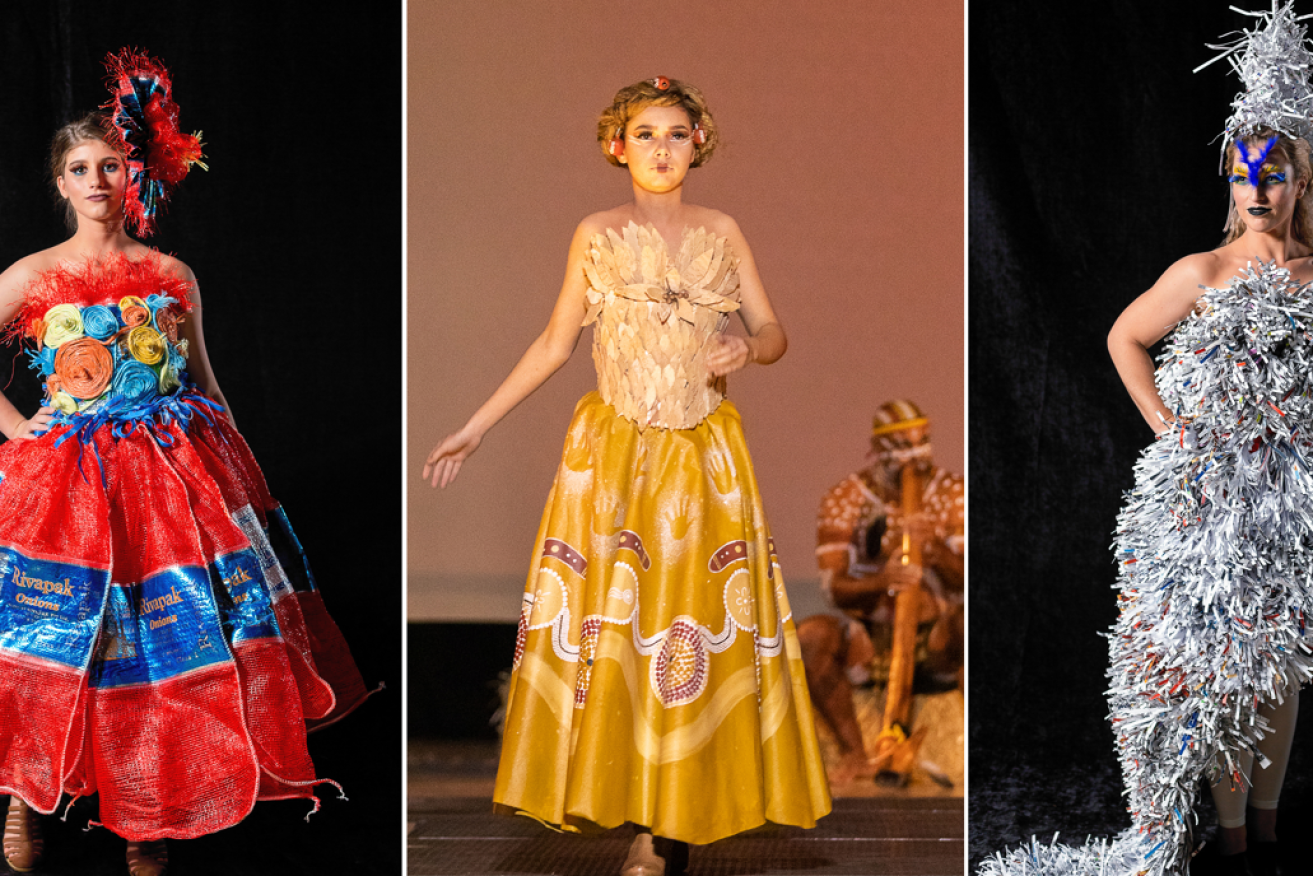
Recycled materials became ball gowns for the Dress the morale-boosting Central West fashion show in Barcaldine, Queensland. Photo: AAP
When painter MaryAnn Marshall first moved to a small country town, she took out a $15 ad in the local paper hoping to meet other artists.
“It said, ‘Anybody who wants to start an art group, meet me at the coffee shop on Friday afternoon,'” she recalls.
“My kids were in high school at the time and they were mortified that I would advertise for friends.”
Twelve people turned up at the cafe in Tumbarumba, southern NSW, that afternoon 15 years ago, and the group went on to form a tight-knit collective called Artists on Parade.
“It was the best $15 I ever spent,” Ms Marshall tells AAP.
Rural landscapes hang in the group’s bright community gallery on the main street, alongside glittering glassworks, nature photography and collections of wood works by local artists.
Beyond its lime green brick facade and decorative antique doors, there is far more to the modest space than meets the eye.
Soon after the catastrophic Black Summer bushfires razed much of the wine and apple-growing region, it became a sanctuary for many weary and traumatised residents.
They gathered in the back room for workshops, quietly making cards, painting pictures of cactuses, sketching native birds, decorating wooden spoons and repairing bicycles.
In the same way Artists on Parade brought together neighbours and strangers years before, these simple acts of creativity forged bonds between bushfire survivors.
‘A memento of the times’
“They were so busy fencing and fixing up and everyone was just exhausted, so we offered them an afternoon off to make something to take home,” Ms Marshall says.
“It was important to have a memento of the times.”
Men opened up about their experiences, schoolchildren were comforted and three women who were previously strangers formed their own art group, working out of their local fire shed.
The workshops were featured in a recent long-term study by the Foundation for Rural and Regional Renewal, which found arts have the unique power to help communities recover from a disaster and prepare for the next.
The foundation, which delivers government, corporate and philanthropic grants to regional communities, urges policy makers to include creative recovery in disaster management plans.
Resilience and recovery lead Nina O’Brien says collaborative creativity eases the sense of isolation and disempowerment often brought on by disasters.
‘Far-reaching benefits’
“Where creative recovery projects are inclusive and participatory by design they leave a lasting legacy, which has far-reaching benefits for communities,” she says.
The federal government’s new national disaster framework for mental health and wellbeing says arts programs should be part of recovery efforts, as they often bring people and local services together.
That was the case for four central western Queensland communities, who staged a series of fashion shows to distract from the endless dust, heat and sorrow at the peak of severe drought in 2019.
Blackall, Barcaldine, Winton and Longreach and their community and health services held textiles and cultural workshops to find beauty in the drought.
After months of designing and dreaming, gowns were sculpted out of fruit sacks, rope and tarp and shown off in two dynamic catwalk shows.
“One lady had never done anything creative in her life and she made a wedding dress from recycled feed bags,” says Louise Campbell, the manager of art and culture production company Red Ridge.
“She was sick of feeding cattle, she was sick of looking at those bags in their ugly form and she switched it completely and made it into the most beautiful frock anyone could have imagined.”
Four years on, the community services behind the Dress the Central West project have broader outreach than they did before the collaboration.
The project also spawned the Aboriginal-founded Red Ridge boutique fashion label, which tells ancient stories through traditional art on bright flowing frocks and scarves.
Ms Campbell says Queenslanders are always anticipating the next fire, flood or drought and art is a reliable escape.
“The arts has a way of bringing together the personal, the emotional and creating a connection that allows us to recharge from those negative energies.”
Healing a town divided
Rural and Regional Renewal awarded $1.3 million in grants to 131 local groups across Australia in June, supporting creative endeavours like community gardens in Tasmania, a wildlife festival in SA and an opera in Goondiwindi, Queensland.
Texas, a town of 790 people on the border of NSW and Queensland, is still recovering after it was split in two during COVID-19 lockdowns.
Its arts council will use a $10,000 grant to bring back Texas Has Talent, a music program that helps locals write their own songs and perform at a concert in the community hall.
Organiser Annabel Cleeve says they sang about the weather, people on the street and even living with dementia during the first program in 2019.
The vulnerable act of writing original music has brought Texas’ young and old together, she says.
“Not all children have a positive role model in their lives and not all the elderly have someone young to provide company for them anymore.
“Both ends of society in small towns are suffering and they need each other.
“And now they have someone to say hello to when they walk down the street.”
-AAP
